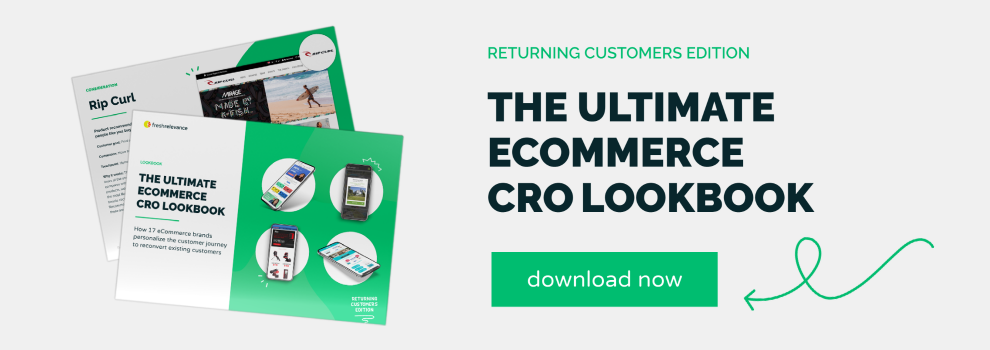Active lifestyle stores often specialize in niche, expensive and technical purchases, such as skis and surfboards. These items are typically an investment and require more customer confidence than the average purchase. When shopping in-store, knowledgeable sales clerks are on hand to help customers make the right choice. To succeed in the eCommerce space, active lifestyle brands need to reproduce that in-store experience online.
How can they do this?
By using browse, purchase and contextual data to provide a helpful customer experience tailored to each individual.
Read on to learn which tactics to use for your own eCommerce active lifestyle store to create seamless, tailored experiences that result in more revenue and happy customers, with real-life examples from four active lifestyle businesses.
1) Data capture
The ability to provide a tailored email experience starts with collecting quality email addresses for your database. The use of a pop-up or popover form on your website can contribute to this. In fact, one Fresh Relevance client increased newsletter sign-ups by 333% through targeted popovers.
When implementing pop-ups and popovers, timing and context are key. Your pop-ups and popovers will be most effective when they are prompted by shoppers’ actions and inactions, and should be triggered when they will have the most impact, for example at the moment of cart abandonment.
American Golf uses a popover to encourage shoppers to sign up to their free AG Club, listing the benefits and highlighting the fact that membership is free.
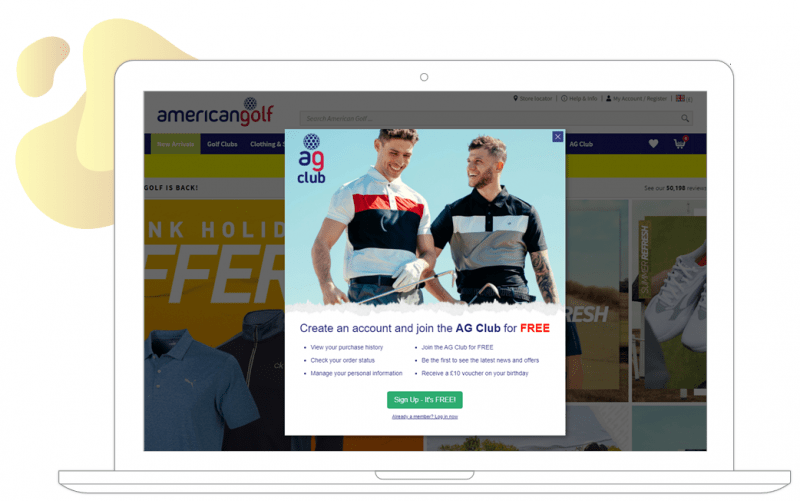
Source: americangolf.co.uk
2) Social proof
When shopping in-store, we can quickly see when a product is popular if it attracts a crowd of shoppers or if there aren’t many left on the shelf. These social proof cues ease purchase anxiety and signal that this is a product worth buying. In the absence of physical crowds, eCommerce stores can recreate this feeling online with social proof tactics such as ratings and reviews.
American Golf uses real-time browsing data to display how many other shoppers are looking at a particular product, bringing to life the product’s popularity. Including social proof tactics such as popularity messaging in your eCommerce marketing is proven to boost sales by up to 13%.
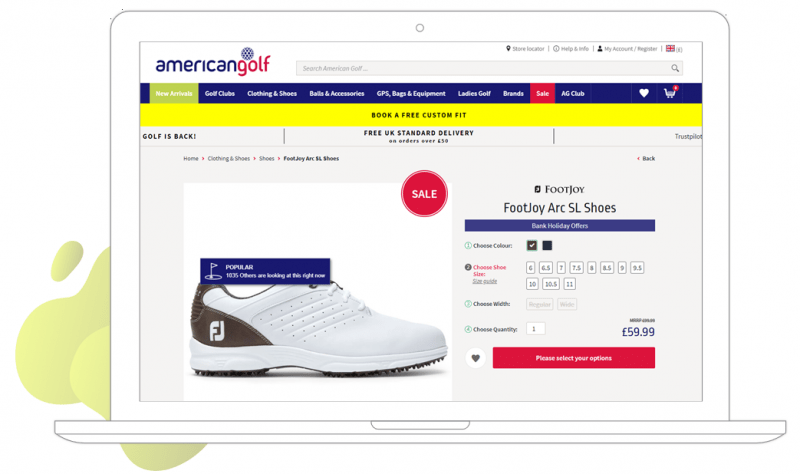
Source: americangolf.co.uk
3) Product recommendations
Purchasing active lifestyle products can be overwhelming. If you’ve ever shopped for running shoes, you’ll know it involves more research than your university dissertation. When shopping in-store, the experience is usually made easier by helpful sales clerks on hand to help navigate different brands and features. Ecommerce stores need to be just as helpful as those knowledgeable sales clerks by providing recommendations tailored to the shopper’s context and preferences.
Product recommendations are a lucrative tactic for any eCommerce business, and can generate sales uplifts of up to 11%. But with many different types of product recommendations to choose from, make sure you select the right tactic for your business and customers.
Here are a few ways active lifestyle stores use product recommendations.
New arrivals
For new shoppers to your website, showcasing new arrivals can be an effective type of product recommendation. By giving top billing to their new arrivals on the homepage banner, Surfdome builds excitement around the shopping experience and plays to our built-in expectation that something new must be better than what came before.
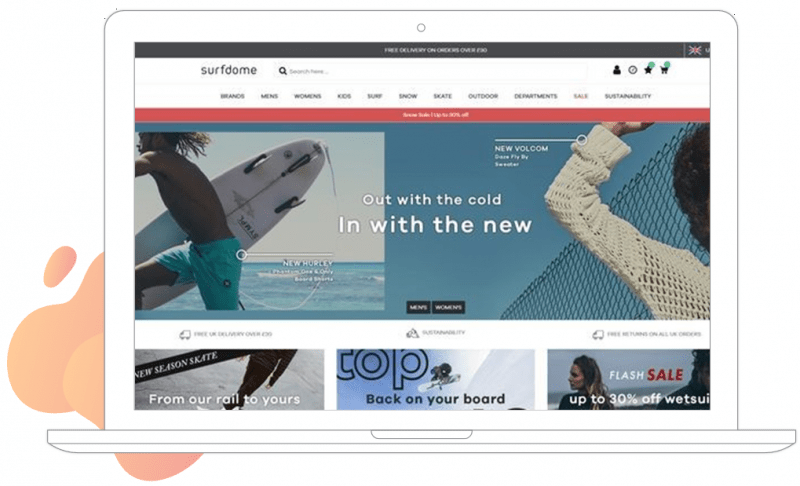
Source: surfdome.com
“After viewing this, people buy”
This type of product recommendation leverages the fact that people who share a preference for one product are likely to agree on other products too.
It anticipates the products that are most likely to lead to a conversion and lets you showcase a wider range of your product inventory to shoppers.
Greaves Sports uses this tactic to help their customers see products that they might not have thought about when they made their initial search, much in the same way that a sales clerk would bring out a selection of running shoes to help you pick the right pair for you.
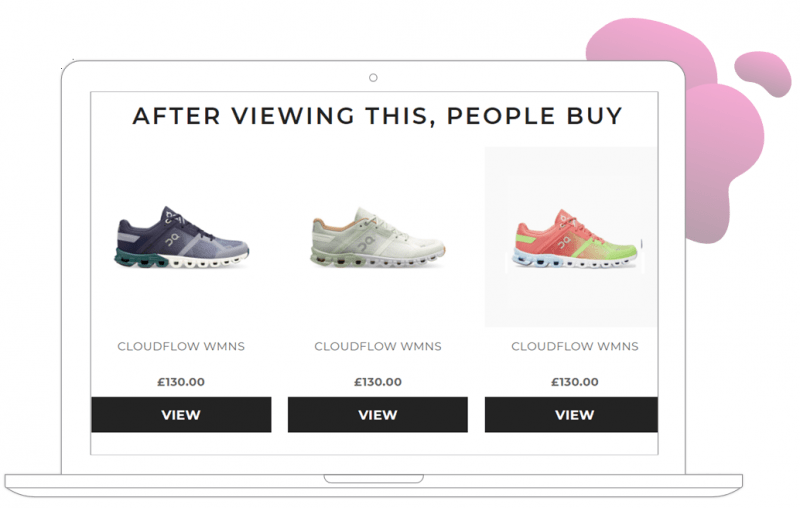
Source: greavessports.com
“People like you buy”
This tactic looks at the shopper’s product purchase history, and compares with other shoppers who’ve viewed those products, using a machine learning algorithm to recommend the most likely eventual purchases.
Rip Curl boosts engagement by using the heading ‘Recommended for you’ to signal to shoppers that these are items specifically chosen for them.
Learn more: How Rip Curl boosted their sales by more than 10% with eCommerce personalization
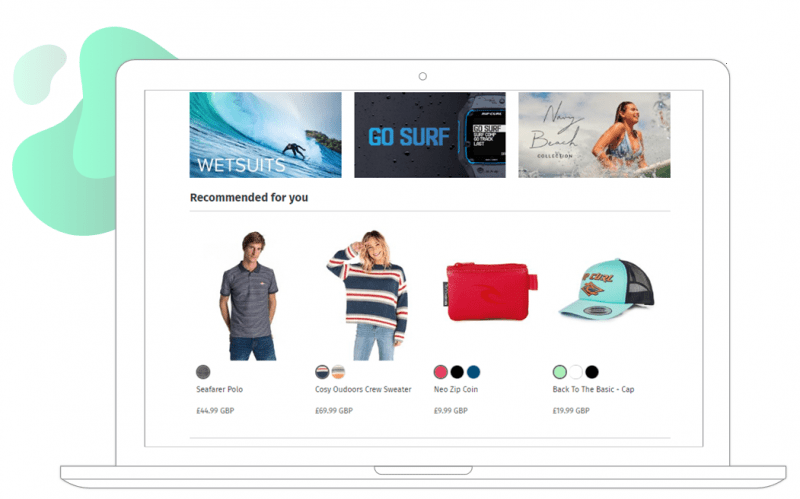
Source: ripcurl.eu
4) Triggered emails
Successful eCommerce stores deliver personalized, real-time content to shoppers at the moment they are most likely to convert, and triggered emails are a big part of this.
With triggered emails, customers who take a pre-defined action are automatically sent an email that nudges them towards a next action.
Cart abandonment emails are probably the most well known type of triggered email, and for good reason. They’re a proven revenue booster. In fact, the average Fresh Relevance client doing cart and browse abandonment emails sees a sales uplift of 12%.
When shopping for active lifestyle products online, a plethora of options and the high stake purchases mean abandoned carts are inevitable. And while some shoppers may never return to the checkout, shoppers who got distracted or abandoned to do more research can often be persuaded to return with a cart abandonment email program.
Rip Curl sends timely, personalized cart abandonment emails to entice shoppers back to their site.

Source: Rip Curl email
5) Geotargeting
Context is an important consideration for active lifestyle retailers, since not every activity is suitable for every season and all weathers.
Physical stores change their window displays and bring out different products to fit their location’s context, and successful eCommerce stores are no different.
With contextual data, eCommerce stores can make use of geotargeting to treat customers differently based on where they’re located, ensuring that they see content most relevant to their current context.
Surfdome uses a bright orange banner on the homepage to promote the release of their winter gear, as well as highlighting their range of winter wetsuits and ski products.
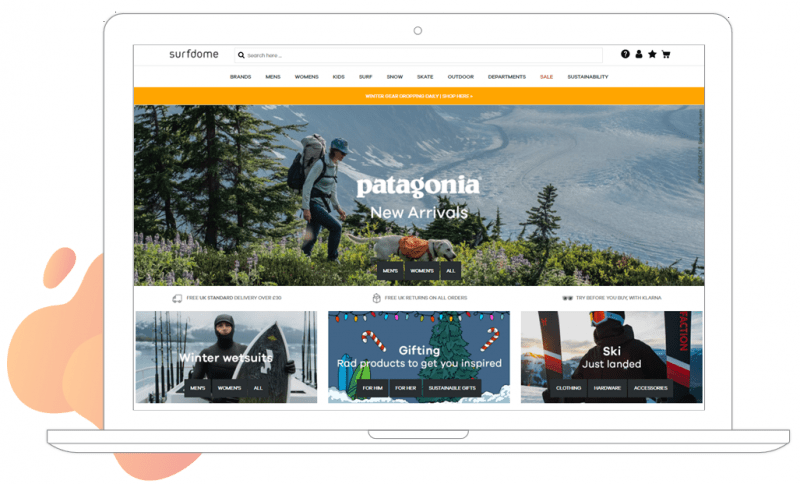
Source: surfdome.com
Active lifestyle brands can take contextual targeting a step further by recommending weather-specific products depending on the shopper’s location. For example, highlighting rain-proof running gear on a rainy day.
For more inspiration check out our Ultimate Ecommerce CRO Lookbook [returning customers edition], packed with 17 real-life eCommerce personalization examples to foster brand loyalty and reconvert existing customers.


